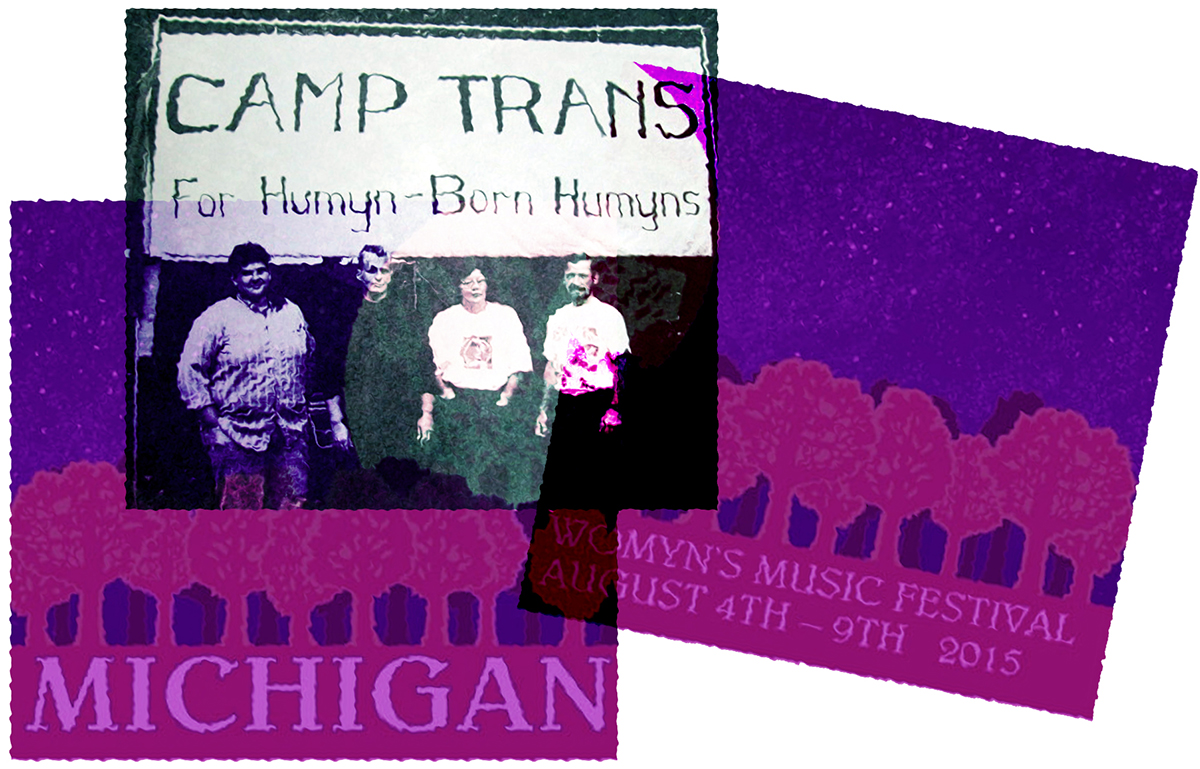Womyn-Born Womyn

Such gender dogma led to problematic entanglements with the trans community in the 1970s and beyond; first, the women’s music company Olivia Records (founded by former Fury, Ginny Berson, in 1973) was challenged by many feminists for employing sound engineer Sandy Stone, a trans woman, in 1977. More famously, the Michigan Womyn’s Music Festival (MichFest), held annually from 1976–2015, ended in large part because of its trans-exclusive “womyn-born-womyn” admittance “intent.” I say “intent” rather than “policy” here because of festival founder Lisa Vogel’s 2014 statement that
this space, for this week, is intended to be for womyn who were born female, raised as girls and who continue to identify as womyn. This is an intention for the spirit of our gathering. . . . It is not a policy, or a ban on anyone. . . . We do not and will not question anyone’s gender. Rather, we trust the greater queer community to respect this intention, leaving the onus on each individual to choose whether or how to respect it. (qtd. in McConnell et al. 11)
While Vogel states directly that this “intention” is neither a policy nor a ban (and that there was no official policing of gender), in effect the event was largely trans-exclusive, if one remembers the expulsion of trans woman Nancy Burkholder in 1991, the 1994 establishment of Camp Trans down the road from the festival, and other incidents (see Kendall).
In short, the relationship between this branch of lesbian separatism and trans women—the entanglement of subjects/objects—has been vexed at best. Because conservative views of “womanhood” (and the argument that some women were more “real” than others) formed a future based on exclusion and subjective authenticity, that future was bound not to matter—in fact it was bound to fail. That is, because such an exclusionary future leaves no space for being-with and cutting together/apart, it is static, cut off from emergence and becoming—from hope.
It’s important to note here that not all separatists were/are the same. Charlotte Bunch, a former Fury, notes that there are distinct strands of separatism—utopian separatism, which led to womyn-only space, and political separatism, which was a strategic "backing out" to gather steam and then move to spread the revolution more broadly (Bunch). Similarly, another former Fury, Rita Mae Brown, writes of separatism: "For some people, regardless of the nature of their institutionalized oppression, they can only apprehend it by removing themselves as best they can from the general culture. The point is to not get stuck there" (Brown).
For my purposes here, I look at the utopian strand of United States lesbian separatism, because in its "getting stuck there," it shows one instance of a rhetoric of instantiation. The effect of the instantiatory moment in this case was the dissolution of a key womyn's space—MichFest. The negated move of a mutually accountable cutting together/apart was here the question of “real” womanhood: a question of the humanist subject.
For even more:
